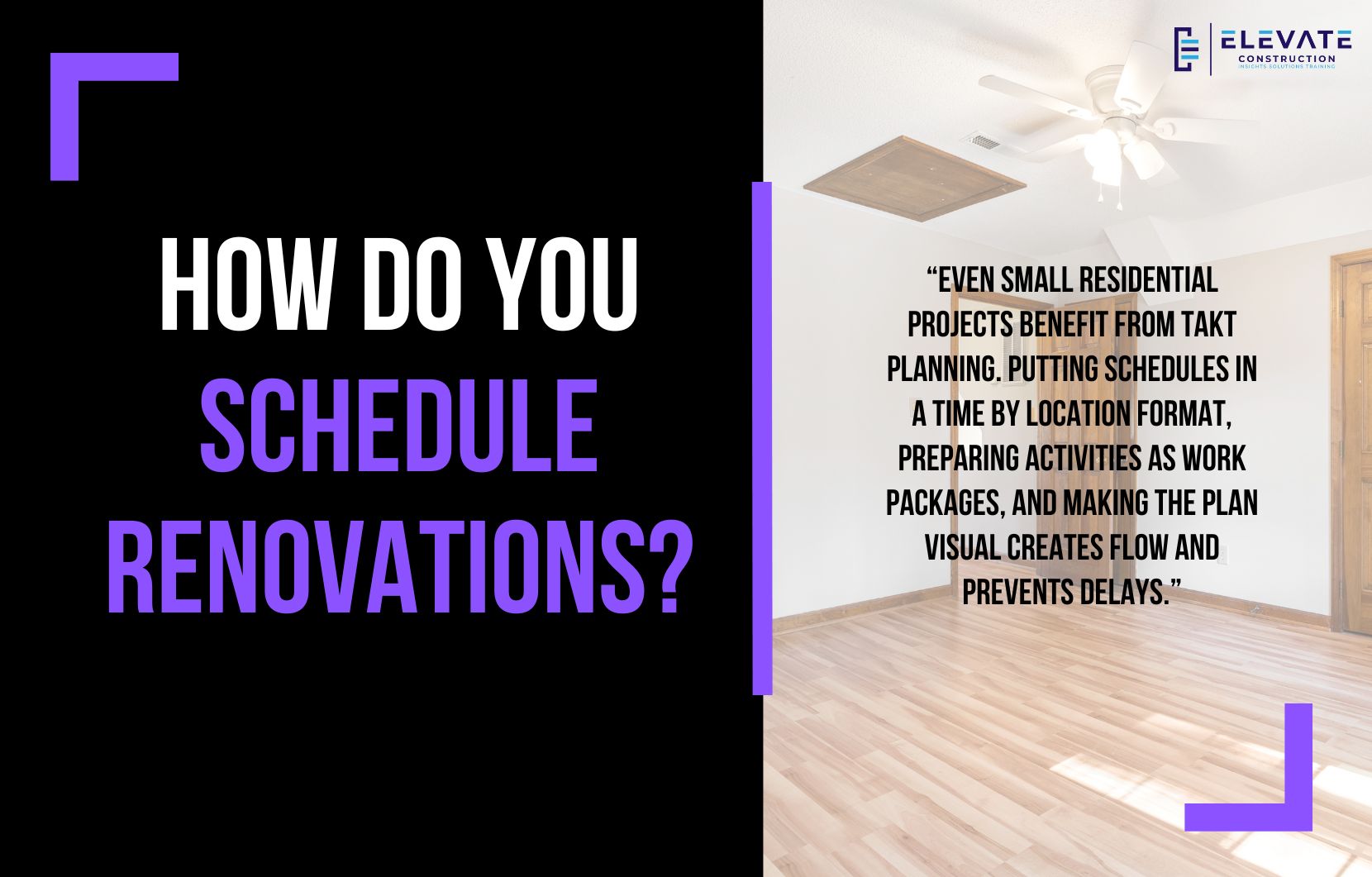Scheduling Residential Renovation Projects the Right Way
I just finished up the FE PE bootcamp in Alabama and I am back home focused entirely on writing the Last Planner System book. We are already more than 100 pages in and aiming for a 300-page book, so there is still work to do, but the vision is finally coming together. That has been the hardest part, and now everything is lining up. It has taken over a year and a half to refine the approach, but I am thrilled to share the progress.
I also want to say thank you for the feedback that comes in from listeners and readers. Recently someone wrote in to say how much they appreciated the Takt Guide website and how it has helped them grow into their role as a new superintendent. Comments like this fuel our mission and remind us that what we are putting out is making a real difference.
Today’s topic comes from another listener question that I think will resonate with a lot of people. A residential renovation team in northern Minnesota reached out after watching the Behind the Hard Hat video about what a foreman does on a construction site. They had some great takeaways and even created new acronyms for their production break room. But their main question was this: how should we schedule residential projects when CPM and Gantt charts keep letting us down?
Their situation is a familiar one. They handle small renovation projects with kitchens, bathrooms, and additions. Budgets top out around half a million dollars. A supervisor and apprentice handle carpentry while they coordinate plumbing, drywall, and concrete crews internally, plus electrical and tile subcontractors. They also manage in-house design and material orders. With so many moving parts across small but numerous jobs, slipping schedules and uncertain start dates have been a constant challenge.
Here is my advice. First, stop relying on CPM and Gantt charts. They do not give you the visibility or the flow you need. Instead, shift to a time by location format. Even for small jobs, this is essential. Some people think takt only works on large, repetitive projects, but that is not true. The real power of takt is in creating flow across whatever trades you have.
When I reviewed their situation, I counted at least seven to twelve trade partners involved. That is more than enough complexity to justify takt. Each trade should be color coded in a time by location schedule. That way you can see where there are gaps, where crews are stacked on top of each other, and whether a flow exists or not. For renovations, you can even split a two-story house into separate zones and map out the sequence accordingly.
The benefit is not just in managing a single project but in managing across multiple jobs. If you overlay schedules, you can see when the same subcontractors will be overburdened and where there are opportunities to smooth out the flow across your portfolio. This prevents last-minute surprises when a trade partner cannot show up.
The second key is preparation. Treat each scheduled activity as a work package. Make sure crews have people, materials, tools, equipment, information, layout, and permissions ready before they start. This eliminates waiting and reduces firefighting.
Third, make the schedule visual. Post it on a huddle board, whether in a break room or virtually, so everyone sees the plan. Too often on small renovations leaders skip this step and keep the schedule in their heads. If trades cannot see the schedule, they cannot coordinate. Publishing it is non-negotiable.
At the end of the day, the same lean principles apply to small residential renovations as they do to large commercial projects. Use takt to establish flow. Color code trades in a time by location format. Overlay projects to balance resources. Break work into packages. And make everything visual so crews can align.
If you do these things, you will move away from slipping schedules and toward predictable results that make both your clients and your teams more successful.
On we go.
Key Takeaway
Even small residential projects benefit from takt planning. Putting schedules in a time by location format, preparing activities as work packages, and making the plan visual creates flow and prevents delays.
If you want to learn more we have:
-Takt Virtual Training: (Click here)
-Check out our YouTube channel for more info: (Click here)
-Listen to the Elevate Construction podcast: (Click here)
-Check out our training programs and certifications: (Click here)
-The Takt Book: (Click here)
Discover Jason’s Expertise:
Meet Jason Schroeder, the driving force behind Elevate Construction IST. As the company’s owner and principal consultant, he’s dedicated to taking construction to new heights. With a wealth of industry experience, he’s crafted the Field Engineer Boot Camp and Superintendent Boot Camp – intensive training programs engineered to cultivate top-tier leaders capable of steering their teams towards success. Jason’s vision? To expand his training initiatives across the nation, empowering construction firms to soar to unprecedented levels of excellence.
On we go

